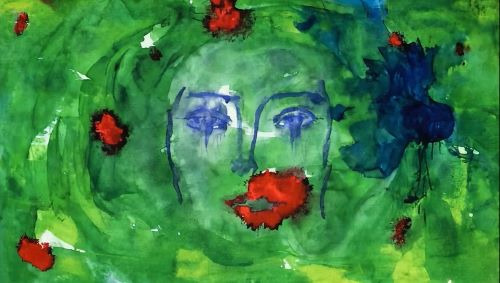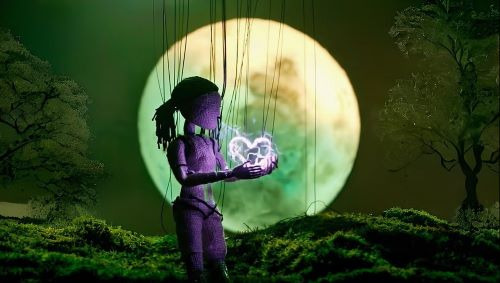Can AI Enhance Human Creativity?Exploring the New Frontier of Co-Creation
AI
Maša Hilčišin
5/15/20255 min read


Keywords: AI and creativity, human-AI collaboration, co-creation tools
As artificial intelligence becomes more entwined with our daily rhythms, many of us—artists, educators, activists, and the endlessly curious—find ourselves asking deeper questions. What does it mean to create in this new age? Can machines understand beauty, or feeling? What happens when we invite them into our sacred creative spaces?
For the past several months, I’ve been in conversation with AI—not with words alone, but through images, colors, and motion. As a visual artist deeply immersed in experimental film-making and alternative painting formats, I stepped into this frontier with an open heart and cautious curiosity.
I wanted to understand not only what AI could do, but what it might mean—for me, for my fellow artists, and for the soul of creative expression itself.
How do I protect the essence of my work when collaborating with an algorithm? How do I act in solidarity with other creators? How can I use these tools with reverence and responsibility—and how might they stretch the boundaries of my own imagination?
While this article is far too small a canvas to paint the full picture, I hope to offer a few brushstrokes—moments from my journey—that might inspire more dialogue.
The Dance of Human and Machine
In How Generative AI Can Augment Human Creativity, it was noted that “Generative AI’s greatest potential is not replacing humans; it is to assist humans in their efforts to create hitherto unimaginable solutions.” (Eapen, Finkenstadt, and Venkataswamy, 2023).
In today's creative landscape, a deeper conversation is unfolding: what does it truly mean to be "assisted" in our art? Is it a form of co-creation with artificial intelligence, or does it represent a seamless immersion into the creative process, powered by intelligent tools? As artists and makers, where do we draw the line between our original ideas and those inspired—or even generated—by AI? And as we open our hearts to these new forms of expression, how do we gracefully navigate the complex terrain of copyright and ethical questions? These aren't just technical debates; they're deeply emotional ones that touch the very core of what it means to create with intention, passion, and soul.
Similarly, in the paper Embracing Creativity: How AI Can Enhance the Creative Process, we’re reminded that "the challenges of using AI in art underscore the difficult interplay between technological innovation and artistic expression. As artists embrace AI as a creative tool, they must navigate these challenges with mindfulness and creativity, finding ways to harness the benefits of AI while preserving their unique artistic identity and emotional resonance." (Fortino, 2023)
My Own Encounters: From Color to Code
In one of my early explorations, I used Runway Studios to merge two of my original paintings into a single visual story.
What emerged was not what I expected—a new face, softly shaped by digital brushstrokes, with colors re imagined and placed in ways I hadn’t considered.
AI, in this case, offered me a reflection I hadn’t seen in my own work—a quiet nudge toward a new possibility.
In another experiment, I crafted a short animated frame using the prompt: “Puppet holding a heart in its hands under a giant moon.”
I uploaded reference images, adjusted materials—plastic became lavender. The outcome surprised me: a cold, gentle color palette I hadn't imagined, but loved instantly. That, too, is creativity—being open to what we didn’t expect.
Between Magic and Morality
Of course, these tools do not exist in a vacuum. They come with complexity, especially around authorship and ethics.
In the recent article from the U.S. Copyright Office on AI, it was clarified that the legal distinction lies in whether AI is merely enhancing human expression or replacing it altogether, addressing that "In the copyrightability analysis, distinguishing between using AI as a tool to assist in the creation of works and using AI to stand in for human creativity is important. The difference is whether AI is enhancing human expression or is the source of the expressive choices." (Lord, 2025)
As artists, our task is to ensure we are still steering the ship. That our hands are not only on the tools, but on the wheel of intention and meaning.
And while I will dive more deeply into the issues of copyright and bias in future writings, they remain vital threads in the tapestry of this conversation.
We must ask: Where do the images come from? Whose voices are embedded in the data? These aren’t just legal questions—they are ethical ones. And they matter deeply.
So… Does AI Enhance Human Creativity?
Yes. In many ways, it does.
AI can serve as a companion, gently layering new visions atop our own, suggesting harmonies where we heard only silence. It can amplify our ideas, remix our memories, and offer unexpected glimpses into what could be.
And perhaps most beautifully—it can help those who’ve struggled to find their creative voice begin to tell their stories. In the Insights From Art Therapists on Using AI-Generated Art in Art Therapy: Mixed Methods Study, it was shared that "integrating AI into art therapy facilitates novel approaches for human-AI cocreation, enhancing creative expression. Technologies such as DeepThInk, developed in collaboration with professional art therapists, promote user creativity while lowering barriers to artistic proficiency within human-AI cocreation." (Shojaei, Torres, and Shih, 2024).
As this study shared, AI-assisted art therapy can help break through barriers, lower the threshold for creative participation, and support emotional healing.
A Letter to the Unknown
We are only just beginning.
To dance with AI is to dance with uncertainty. It is to open ourselves to questions we cannot yet answer—and to trust that even the questions are a form of art.
As we move forward, we must do so with tenderness, integrity, and above all, love—for our work, for our fellow creators, and for the beautiful mystery of making.
As we shape the future with technology, may we do so with intention, compassion, and creativity. Let us honor the power we hold, using it not for dominance but for deeper connection. May we approach every creation with integrity and reverence—for our craft, and for the artistry of others.
References:
Fortino, A. (2023) Embracing Creativity: How AI Can Enhance the Creative Process. Available at: https://www.sps.nyu.edu/homepage/emerging-technologies-collaborative/blog/2023/embracing-creativity-how-ai-can-enhance-the-creative-process.html (Accessed: May 15th, 2025)
Eapen, T., Finkenstadt, D., Folk, J., and Venkataswamy, L. (2023) Harvard Business Review: How Generative AI Augment Human Creativity. Available at: https://hbr.org/2023/07/how-generative-ai-can-augment-human-creativity (Accessed: May 15th, 2025)
Lord, M. (2025) US Copyright Office on AI: Human creativity still matters, legally. Available at: https://www.wipo.int/web/wipo-magazine/articles/us-copyright-office-on-ai-human-creativity-still-matters-legally-73696 (Accessed: May 15th, 2025)
Shojaei, F., Torres, J.O., and Shih, P. (2024) Insights From Art Therapists on Using AI-Generated Art in Art Therapy: Mixed Methods Study. Available at: https://pmc.ncbi.nlm.nih.gov/articles/PMC11634044/ (Accessed: May 15th, 2025)

